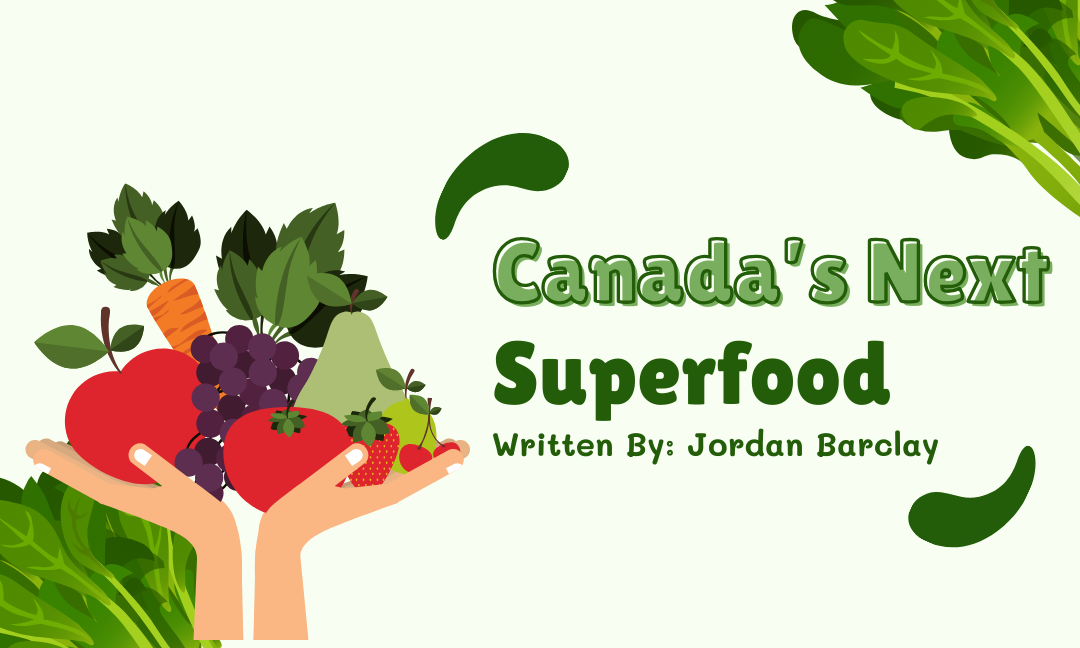Written By: Jordan Barclay
Edited By: Nehaa Kousihan
Designed By: Jiya Mehta
Published By: Tvisha Lakhani
Are you curious about where Canada’s next superfood will come from? Well, get ready to dive into the world of nutrition because this article will give you all the juicy details. We’ll explore the latest trends in superfoods, both at home and abroad, and discuss which ones are capturing the attention of Canadians. So buckle up and prepare to discover what superfood might soon become a staple in your diet!
But wait, we can’t predict the nation’s next superfood without first describing what a superfood is! Superfoods are foods that are coined “super” due to their density in vitamins, minerals, antioxidants, and other essential nutrients that can help improve your overall well-being. They have been shown to boost your immune system, reduce inflammation, support heart health, improve brain function, and even prevent chronic diseases like cancer. That’s why people are going crazy for them! From nutrient-dense berries like blueberries and goji berries to leafy greens like kale and spinach, superfoods offer a wide range of options for a healthy diet.
Of course, superfoods in Canada are a concept that has been introduced previously such as avocado, chia seeds, blueberries and kale, which have become staples in health-oriented diets, especially smoothies. These nutrient-packed foods are flying off the shelves and entering Canadian kitchens everywhere. Avocado is a creamy fruit that’s loaded with healthy fats and fibre. Kale is a leafy green vegetable rich in vitamins A, C, and K. Another example of common superfoods are fish and eggs. These proteins have become synonymous with nutrient-packed energy, so much so that it’s recommended to consume them weekly.
So, where will Canada’s next superfood come from? Well, the stats point towards Canada’s next superfood coming from abroad. In 2023, Canada welcomed over one million new immigrants and the number of new immigrants will continue to increase with projections indicating that immigrants will make up almost 52% of the population or roughly 25 million of the estimated 42 million Canadians in 2041. The majority of new immigrants are coming from China, India, the Philippines and Africa, countries with rich, and diverse ecosystems of fruits, vegetables and nutritional requirements.
While many of the new immigrants will fully integrate and embrace Canadian nutritional culture, we believe many of these immigrants will try to find new ways to grow their crops within Canada. Fruits such as Durian, Dragon fruit, Mangoes, Mangosteen, Soursop, Kumquat, Persimmon and others will find new homes and relevance within Canada. As well, vegetables originally grown abroad will also be adapted to grow within Canada’s environment. It’s difficult to predict exactly what will become the next exotic superfood, but suffice to say, the new diversity of fruits and vegetables will place Canada in a premium position to play a leading role.
One only has to look at the recent popularity of hemp to better understand how food, once banned for production because of its potential to be used for psychotropic substance abuse, can be reinvented as a superfood. Hemp seeds are packed with essential nutrients like protein, fibre, and healthy fats. They are also rich in vitamins and minerals such as vitamin E and magnesium. Not only that, but they have a pleasant nutty flavour that can be added to various dishes like smoothies, salads, or even baked goods. With its numerous health benefits and versatility in cooking, it’s no wonder why more and more Canadians are turning to hemp as their go-to superfood option for the future.
The important thing is that Canadians are embracing the idea of superfoods and incorporating them into their diets. Whether it’s a local Canadian ingredient or an exotic import, as long as it offers health benefits and tastes great, Canadians will be eager to give it a try.

